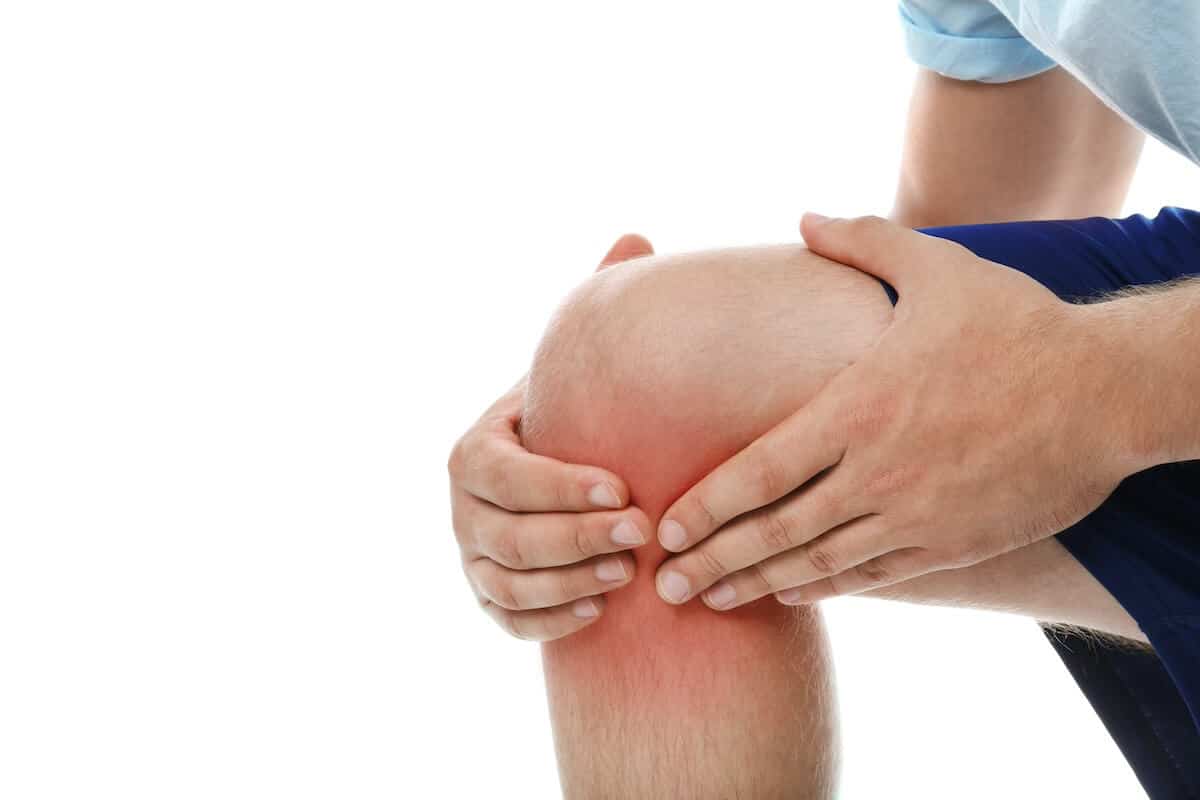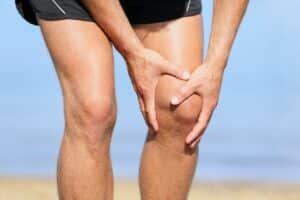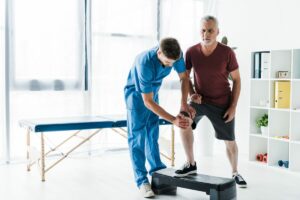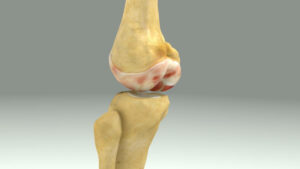Free download: Top 10 Natural & Easy Remedies for Joint Pain from Home. Learn these helpful remedies.
Estimated Reading Time: 6 minutes read
The stability of your knee is crucial for mobility and overall health. Knee stability means having a knee that holds its position well and moves correctly during all activities. When your knee is stable, you can walk, run, jump, and engage in other activities without pain or risk of injury. Muscles, ligaments, and bones work in harmony to support knee stability.
Knee instability, on the other hand, can severely affect your ability to perform daily tasks. It often results from weakened muscles or damaged ligaments and can lead to discomfort and further injuries. Recognizing the importance of both stability and instability is the first step towards maintaining knee health.
Table of Contents
What Leads to Knee Joint Instability?
Knee instability can be caused by various factors that compromise the knee’s support system. Here are some key causes:
- Ligament injuries: Tearing or stretching of knee ligaments, often from sports injuries.
- Muscle weakness: Lack of strength in the muscles around the knee can lead to poor support.
- Structural anomalies: Congenital or acquired issues in the knee structure can lead to instability.
- Previous knee injuries: Injuries like fractures or dislocations can lead to chronic instability.
- Overuse: Repeated stress on the knee can wear down tissues, leading to instability.
- Age-related wear and tear: As we age, the knee joints can become less stable due to weakening tissues.
Symptoms of Knee Instability
Recognizing the symptoms of knee instability can help in seeking timely medical advice. Here are the most common symptoms:
- The knee may suddenly buckle and fail to support weight.
- Pain and swelling can appear immediately following an injury or may develop later.
- Stiffness in the knee can limit its ability to bend or fully extend.
- Popping or crunching sounds may occur during knee movements.
- The knee might occasionally lock and not straighten completely.
- If the knee is painful, the weight may be shifted more onto the other leg.
When should you seek medical advice for knee instability?
It’s important to consult a doctor when you notice signs of knee instability. Early diagnosis can prevent further damage. Signs that you should see a doctor include:
- Persistent pain or swelling
- Recurrent instability
- Decreased range of motion
- Difficulty in performing everyday activities
- Signs of deformity in the knee area
Exercises to Improve Knee Stability
Begin with Isometric Exercises
These exercises help in strengthening muscles without joint movement, reducing the risk of further injury.
1. Quad Sets
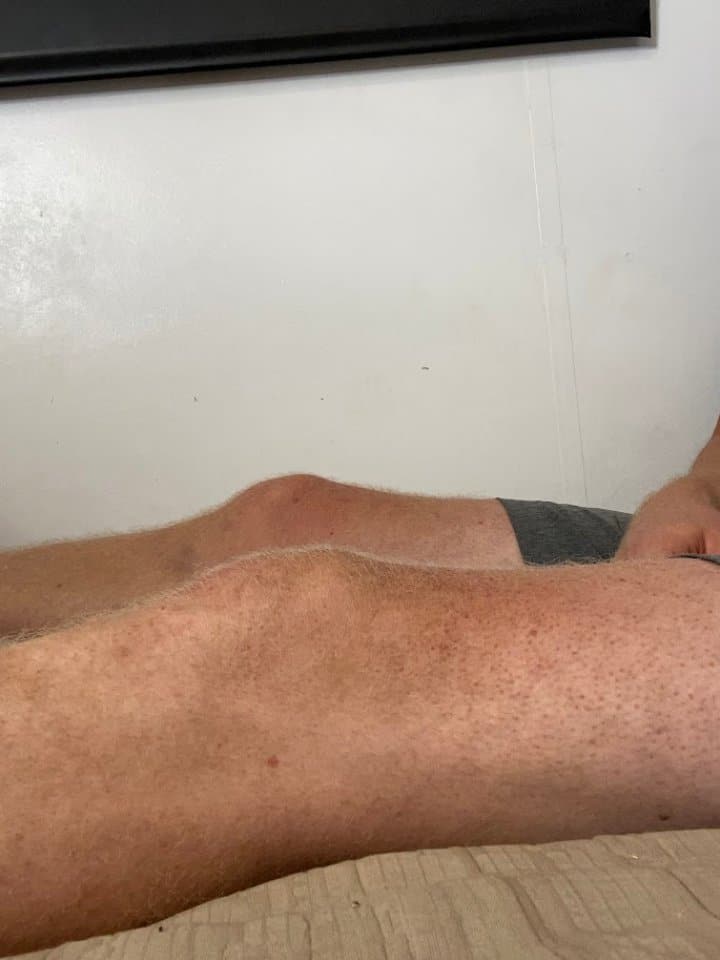
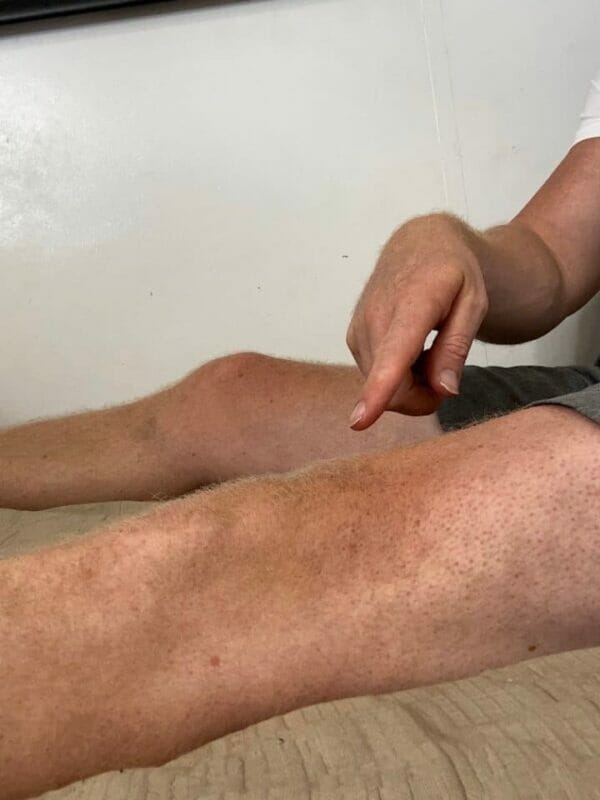
- Starting position: Seated with the injured leg stretched in front of you (can be on the floor, couch, or bed).
- Squeeze the quadriceps (the muscles on the top of the thigh) and try to press the back of the injured knee down toward the surface.
- Hold for 5 seconds, then relax.
- Repeat 10 repetitions for 3 sets.
2. Standing Hamstring Curl
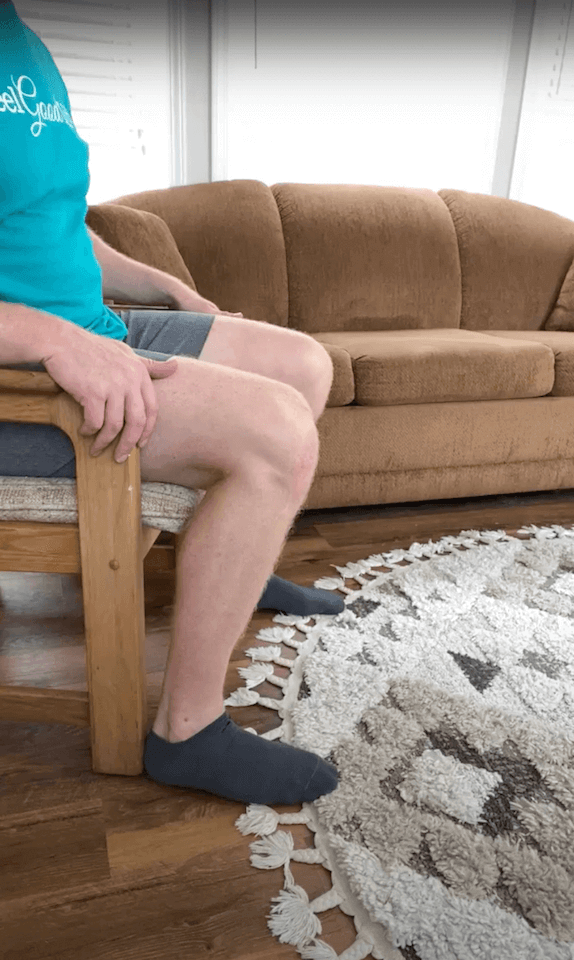
- Sit on a chair with your feet flat on the ground and knees bent at a 90-degree angle.
- Press one foot firmly against the chair leg, activating your hamstring muscles.
- Hold this position for 5-10 seconds, focusing on the tension in your hamstring.
- Release the pressure and repeat on the other side.
- Aim for 10 repetitions on each leg.
Progress to Strengthening Exercises
Once your knee feels stable enough, these exercises can help build muscle strength around your knee.
1. Short Arc Quad
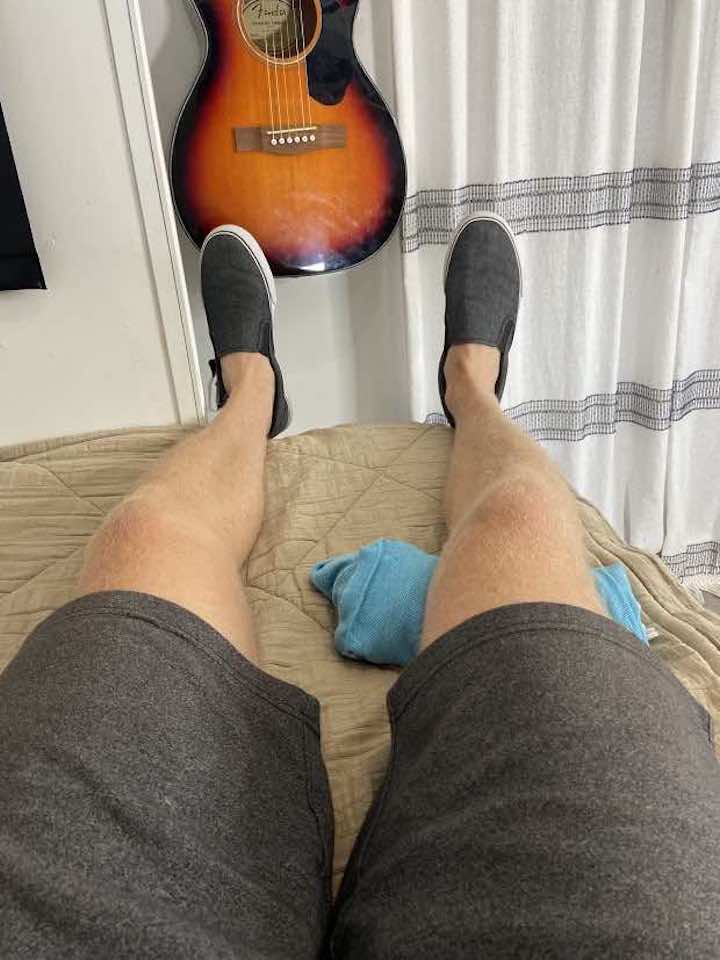
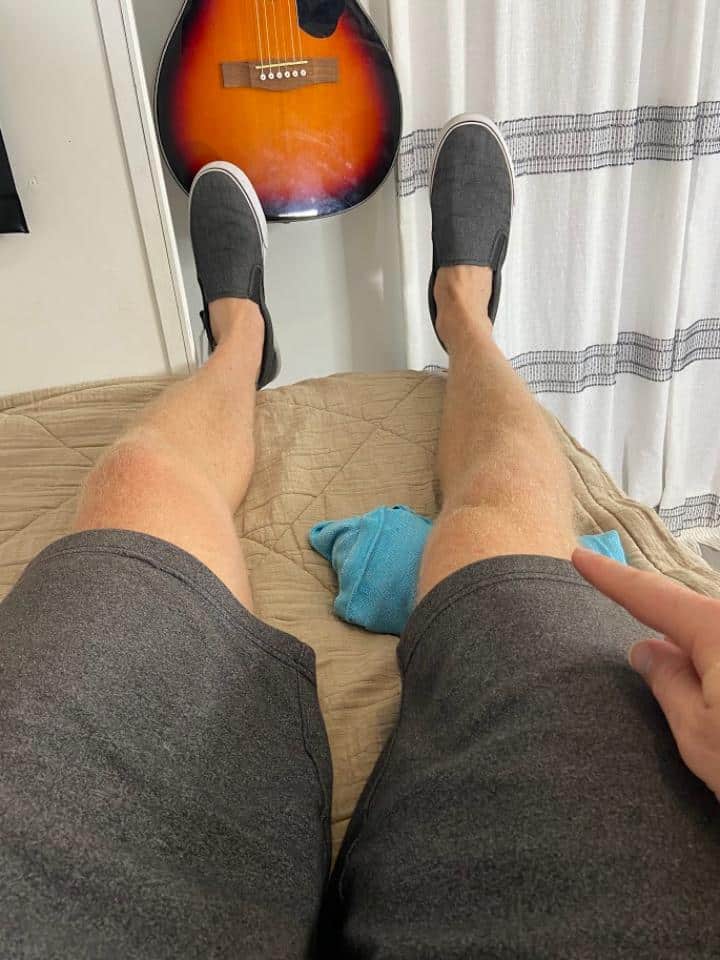
- Begin either laying on your back or in a long sitting position with the injured leg straight out in front of you. You can do this on your bed, couch, or the floor, depending on what is safest and easiest for you to use.
- Place a rolled towel under the back of the knee so that the knee is now bent.
- Similar to the quad set, squeeze the top of the thigh (your quadricep muscles), pressing the back of the knee into the towel as the foot kicks up from the surface.
- Hold up to 5 seconds, then lower the foot back down and relax the muscles.
- Repeat 10-15 repetitions for 2-3 sets.
2. Knee Lifts
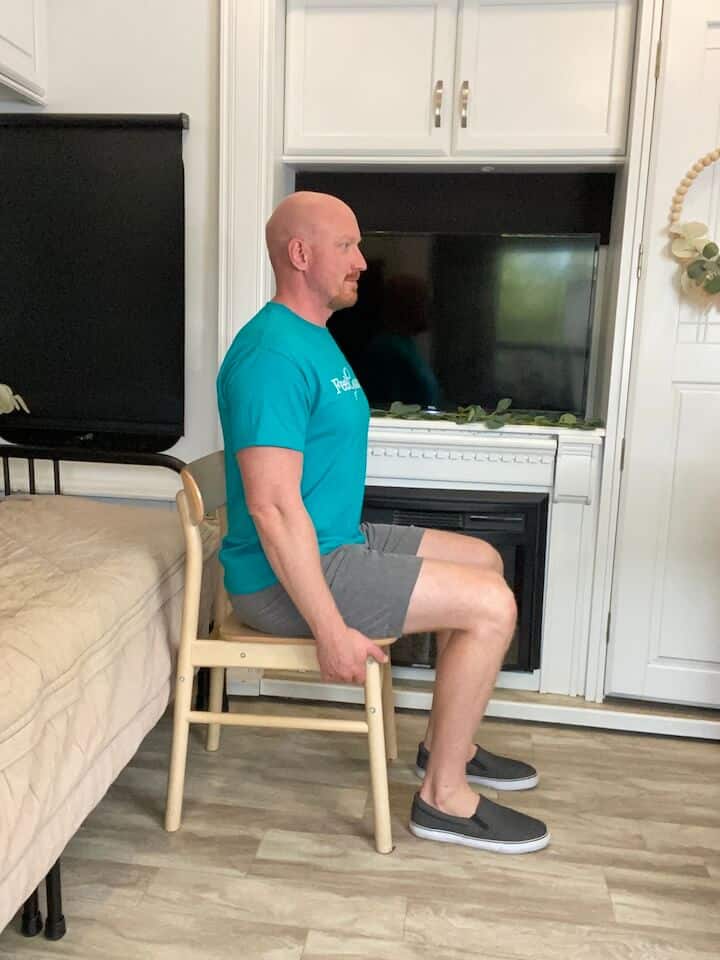
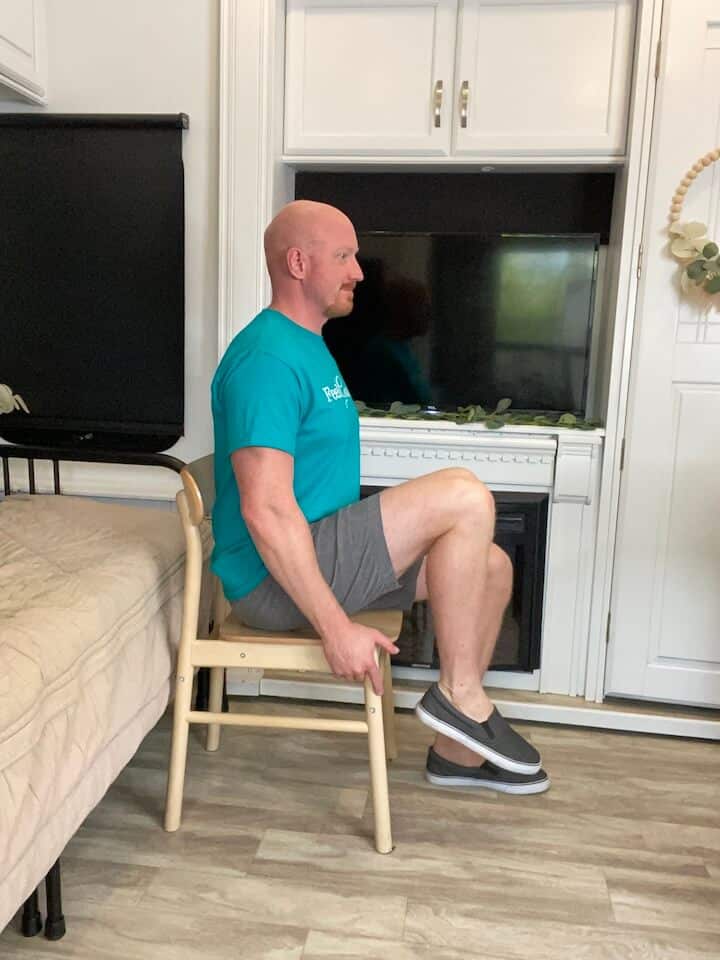
- Sit at the edge of your chair, holding the sides for support if needed.
- Lift your right knee slowly towards your chest.
- Return to the starting position with control.
- Repeat the motion with the left leg.
- Alternate between legs.
- Keep your back straight and avoid leaning back.
- Aim for a total of 10 reps, alternating between legs.
3. Full Leg Lifts
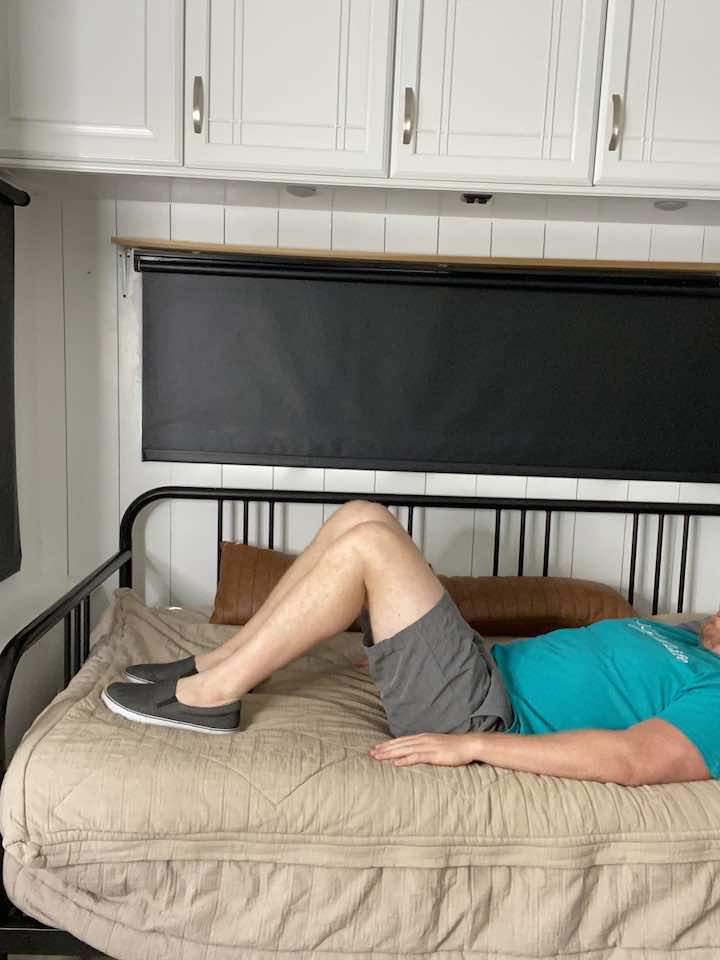
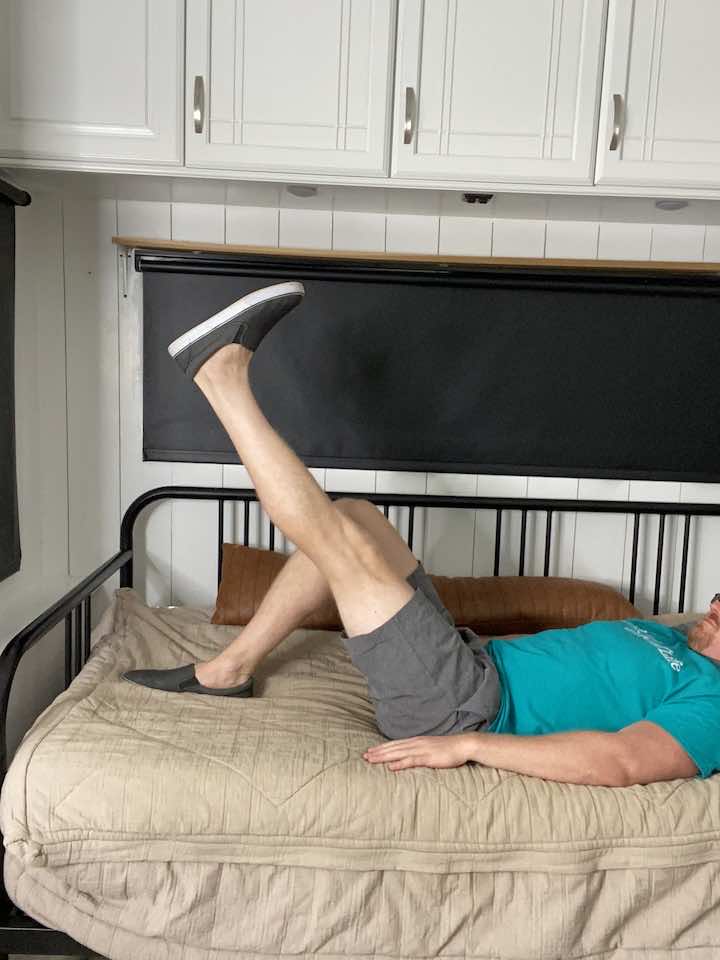
- Lie on your back with one leg bent and the other leg straight and together.
- Lift your straight leg up towards the ceiling, raising your buttocks off the floor.
- Slowly lower your leg back down, stopping just above the floor. Hold for 5 seconds briefly.
- Repeat the movement for 10 repetitions and 3 sets.
4. Bridges

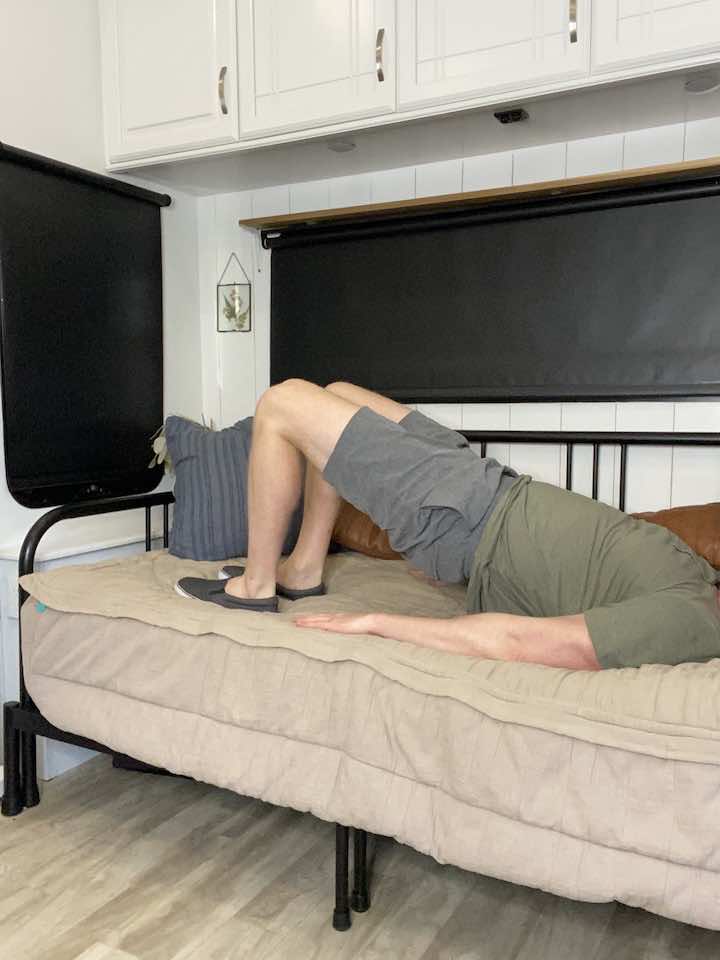
- Lie on your bed or floor (a bed is better if you have difficulty getting on the floor). Again, ensure your knees are bent at about 90 degrees and your feet are flat on the floor.
- Lift your hips off the ground, using your hands to help push your hips up if needed.
- Slowly lower your hips to the bed or floor and repeat 10 repetitions for 3 sets.
5. Standing Hamstring Curl
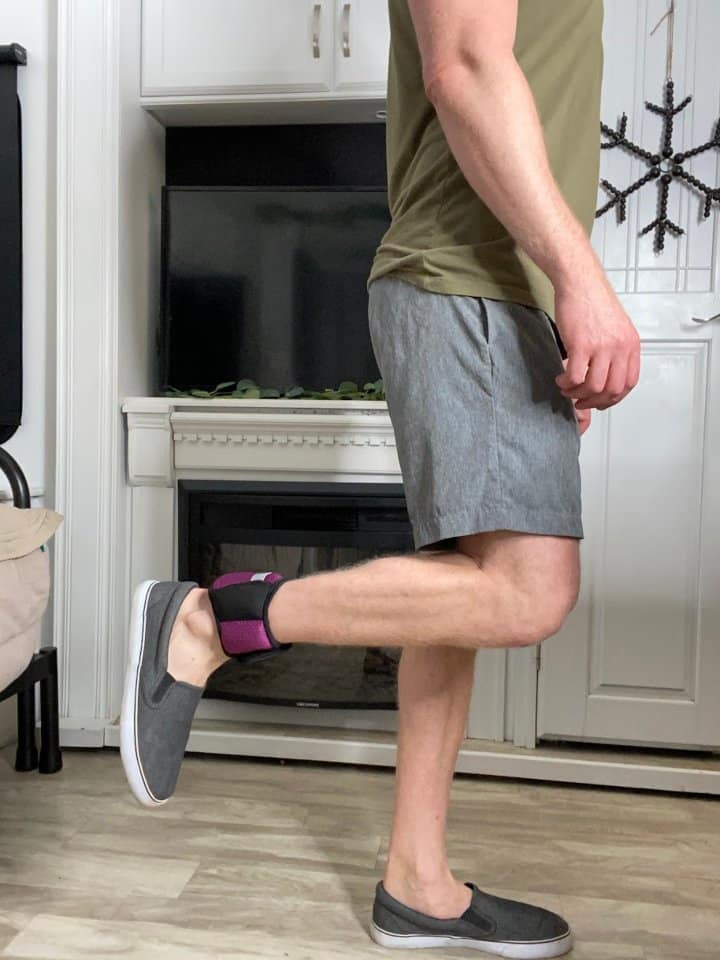
- You can use 2-3 lb ankle weights or tie a resistance band around the ankles.
- Stand in front of a sturdy surface, such as a countertop.
- Bend one knee, allowing the foot to kick up towards the bottom.
- Make sure the thighs remain close together.
- Return to your starting position. Repeat 10 repetitions for 3 sets.
- Practice on both legs.
6. Standing Calf Raises


- Stand facing a wall or sturdy surface for balance.
- Place your feet hip-width apart.
- Slowly lift your heels as high as you can and then lower them back down.
- Repeat for 10 repetitions for 3 sets.
Tips for Caring for Your Knees
Taking care of your knees is vital for preventing instability and ensuring longevity in knee health. Here are some tips:
- Regular exercise: Keep the muscles around your knees strong.
- Proper footwear: Wear shoes that provide good support and cushioning.
- Weight management: Keeping a healthy weight reduces stress on your knees.
- Avoiding high-impact activities: Choose low-impact exercises, especially if you have experienced knee issues.
- Stretching: Regular stretching helps maintain flexibility and reduce stiffness.
Conclusion
In conclusion, understanding knee stability and instability is vital for maintaining mobility and quality of life. By recognizing the causes and symptoms, engaging in appropriate exercises, and following care tips, you can help preserve or improve knee stability.
Always consult with a healthcare provider for a personalized approach, especially if you experience ongoing knee problems. Taking proactive steps toward knee health can significantly impact your overall well-being and prevent future complications.


